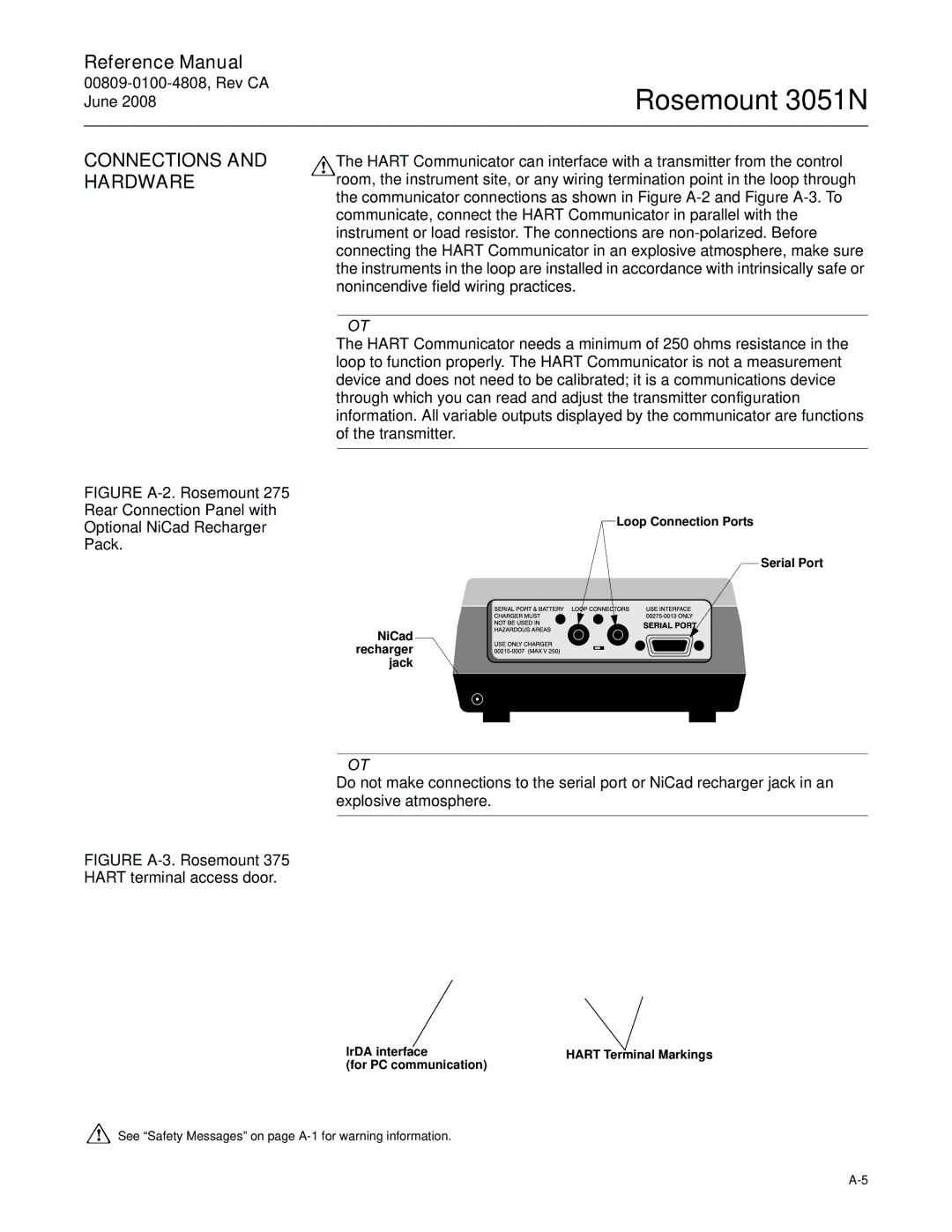3051N specifications
The Emerson Process Management 3051N is a state-of-the-art pressure transmitter that exemplifies precision and reliability in process automation. Designed for a wide range of industrial applications, the 3051N is celebrated for its advanced features, innovative technologies, and robust construction, catering to the evolving needs of process industries.One of the standout features of the 3051N is its exceptional accuracy. With a standard accuracy rating of ±0.075% of span, it ensures precise pressure measurements, critical for maintaining optimal process conditions. This high level of accuracy makes it suitable for applications in industries such as oil and gas, chemicals, and water treatment, where even minor deviations can lead to significant operational issues.
The 3051N employs Smart Pressure Technology, integrating digital communication capabilities with traditional analog systems. This technology allows for seamless interoperability with existing process control systems, providing users with vital data for diagnostics, calibration, and configuration via HART, FOUNDATION fieldbus, or Profibus protocols. These capabilities lead to enhanced process efficiency and reduced downtime due to effective predictive maintenance.
Another notable characteristic of this transmitter is its robust design. The 3051N is built to endure harsh industrial environments, with a rugged housing that is resistant to corrosive and hazardous conditions. Its wide operating temperature range, typically from -40°C to 85°C, coupled with various diaphragm materials, ensures that it can function effectively across diverse applications.
Moreover, the Emerson 3051N incorporates advanced predictive diagnostics, enabling users to monitor the health of the transmitter continuously. This feature alerts operators to potential issues before they escalate, facilitating proactive maintenance strategies that can significantly lower operational costs.
The flexible configuration options offered by the 3051N also enhance its usability. Users can select from a variety of pressure ranges, process connection types, and electrical connections, making it easy to customize the transmitter to fit specific application needs.
In conclusion, the Emerson Process Management 3051N pressure transmitter is a versatile and highly efficient device that integrates advanced technology with robust design and exceptional accuracy. Its ability to adapt to various industrial demands while providing predictive diagnostics makes it a preferred choice for professionals seeking reliability and precision in process management.

